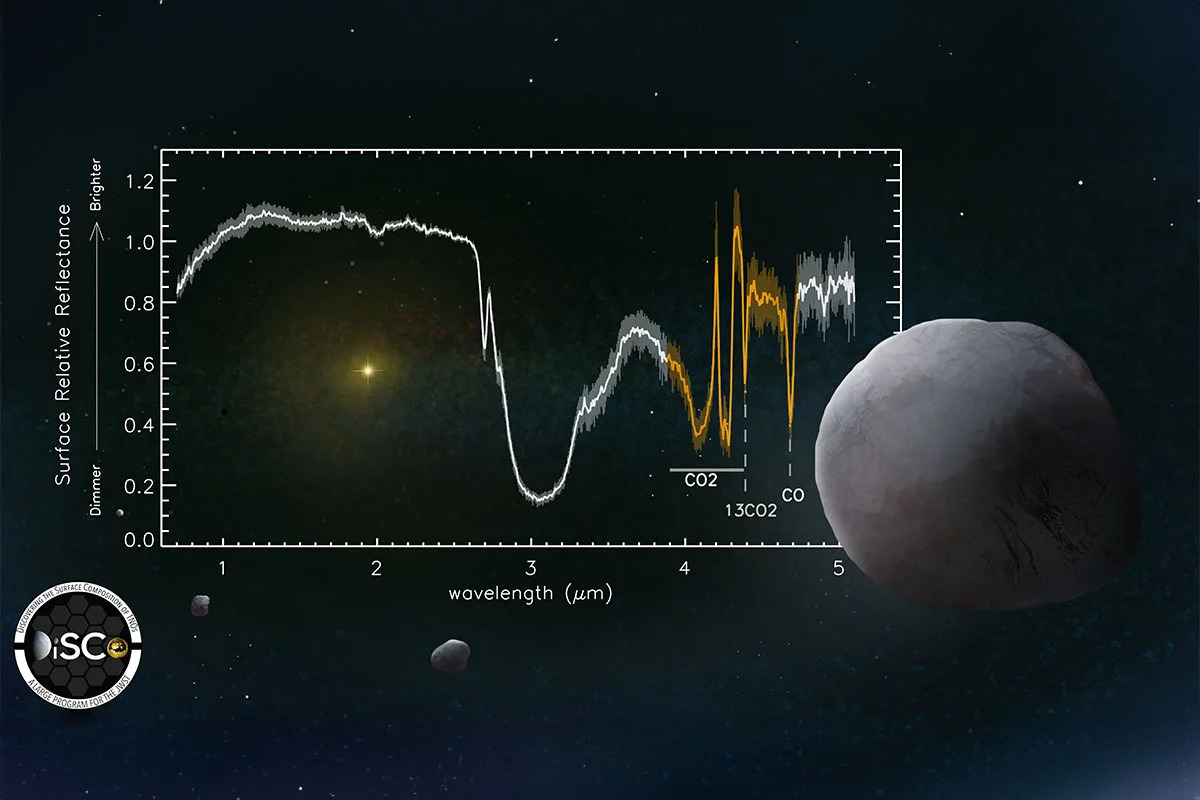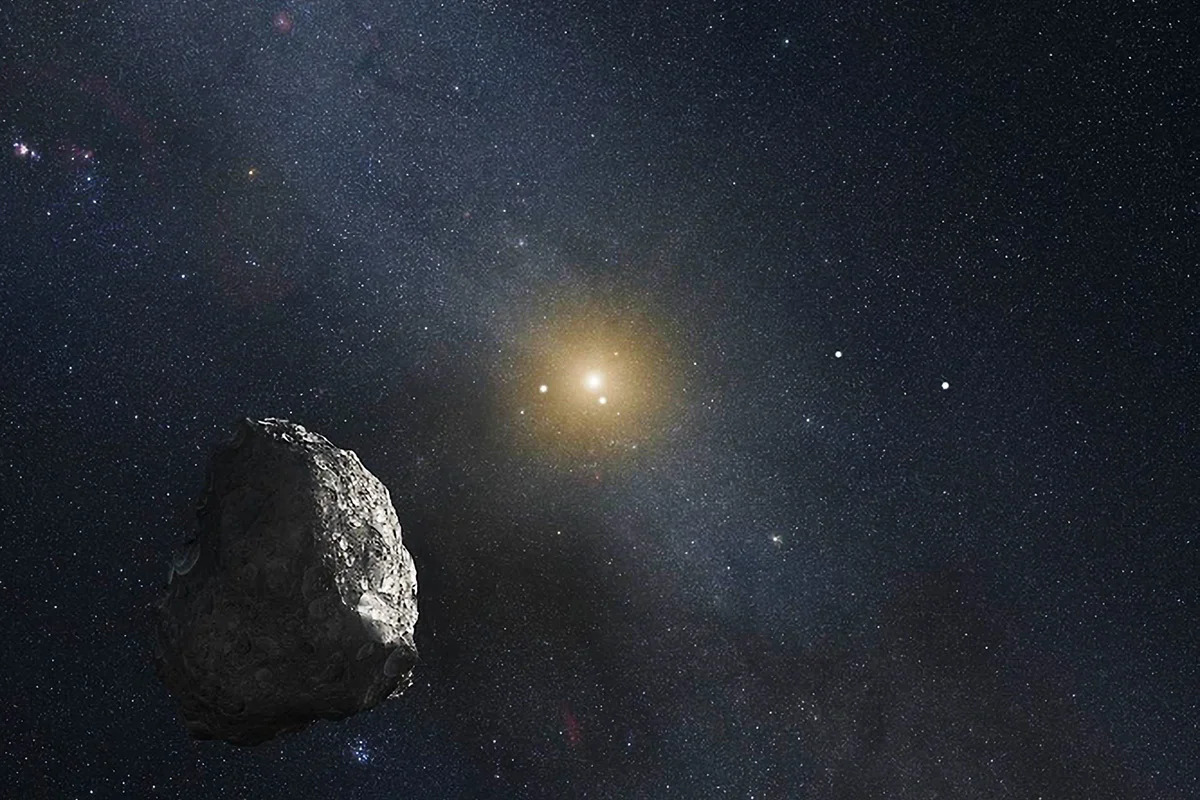Discovery and extent of CO₂ and CO ices across the trans-Neptunian region
A large observing program of the James Webb Space Telescope has recently provided the first comprehensive view of Trans-Neptunian Objects (TNOs), the small primitive bodies of the outer solar system, orbiting beyond Neptune, from which some comets originate. Observations of 59 objects obtained with the NIRSpec instrument have been analyzed by an international research team involving the Institut d'Astrophysique Spatiale. The infrared spectra reveal the first-ever detections of CO₂ and CO ices on small bodies in the outer solar system.
TNOs being formed quite far from the Sun, these objects are still filled with information about their formation over 4 billion years ago, unlike dwarf planets like Pluto, which may have undergone major internal evolution. TNOs have also witnessed planetary migration processes that have, for the most part, redistributed them far from their region of formation. Characterizing their composition would enable us to reconstruct a picture of the young outer solar system before this drastic reorganization. But until now, observations of TNOs have been limited, providing a very partial characterization of their chemical composition: only water and methanol ices have been detected on a handful of objects.
Unexpectedly, CO₂ is widespread, present on 95% of the objects in varying proportions. Remarkably, ¹³CO₂ is also detected, opening up the possibility of studying carbon isotope ratios across the outer solar system. While CO is not stable in the trans-Neptunian region, it is detected together with CO₂ on 47% of objects. This diversity of composition, reflected in variations in the abundance and physico-chemical state of the ice, will enable us to retrace the history of the TNOs to find their formation region in the protoplanetary disk, differentiating its influence from that of later evolutionary processes. Indeed, while CO₂ may have been inherited from the protoplanetary disk, CO is more likely to have been formed by the solar wind and cosmic rays that continuously bombard these icy, atmosphereless surfaces.
Links:
Contact at IAS: Elsa Hénault

nfrared spectra of the surface of a trans neptunian object highlighting the fundamental absorption band of CO₂ and CO.
Credits : William Gonzalez Sierra, Florida Space Institute.

Credits : NASA, ESA, and G. Bacon (STScI)




